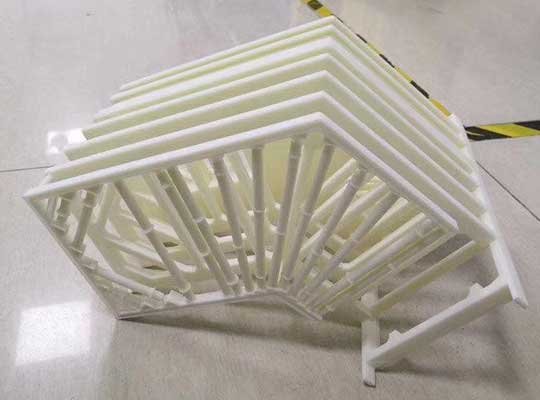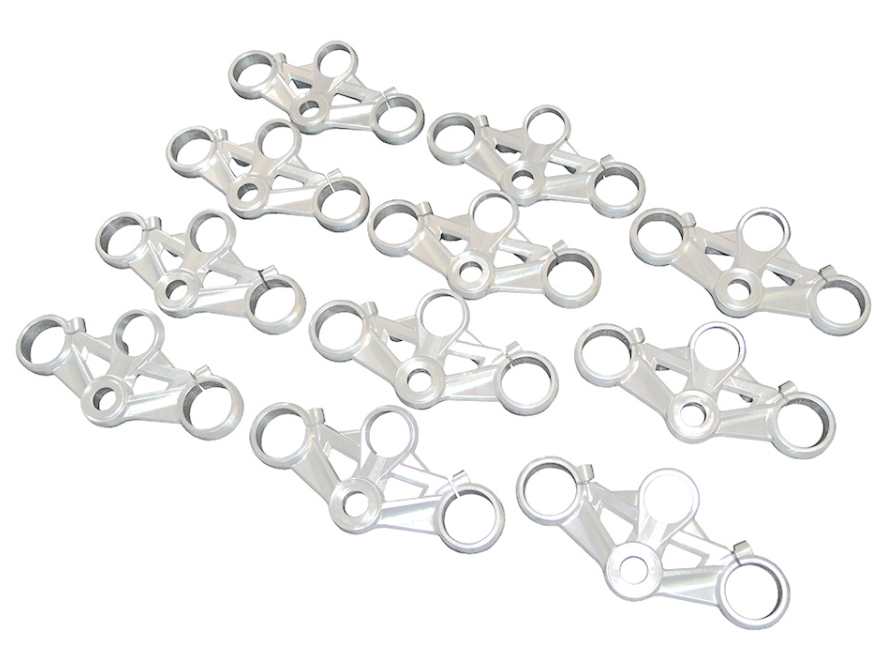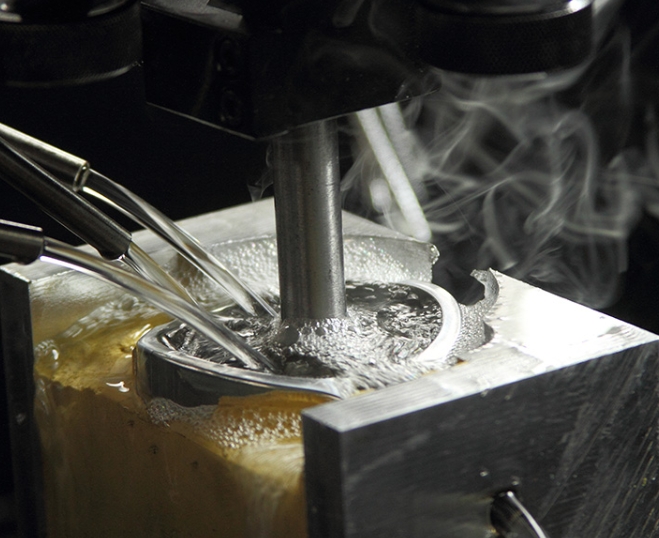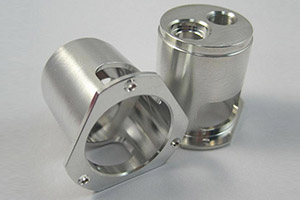Pemodelan pemendapan yang bersatu (FDM) remains one of the most accessible and versatile 3D printing technologies for creating thermoplastic parts. From functional prototypes to custom tooling and small-batch production, FDM offers an affordable solution with a wide range of material options. Walau bagaimanapun, achieving high-quality results requires understanding its unique capabilities and limitations. This comprehensive guide shares proven design strategies to help you create stronger, more reliable FDM prints while avoiding common pitfalls that lead to failures, sisa, and frustration.
Understanding FDM Technology Basics
Before diving into design specifics, it’s essential to grasp how FDM technology works and why certain design choices matter. FDM—also known as Fused Filament Fabrication (FFF)—builds parts layer by layer by extruding molten thermoplastic through a heated nozzle. As each layer cools and solidifies, it bonds with the layer below, gradually forming the complete 3D object.
This layer-by-layer construction creates both opportunities and challenges:
- Kebebasan reka bentuk: Geometri kompleks, internal channels, and custom features are possible without expensive tooling
- Anisotropic properties: Parts have different strength characteristics in different directions (weaker in the Z-axis)
- Layer adhesion requirements: Proper bonding between layers is critical for overall strength
- Thermal considerations: Material shrinkage during cooling can cause warping and distortion
FDM’s popularity stems from its accessibility—desktop printers start at just a few hundred dollars—while industrial systems offer larger build volumes and high-performance materials. This versatility makes FDM suitable for everything from quick prototypes to functional end-use parts in industries ranging from aerospace to consumer products.
Key Design Elements for Successful FDM Prints
Several fundamental design principles form the foundation of successful FDM printing. These elements address the technology’s inherent limitations while maximizing its strengths.
Wall Thickness Optimization
One of the most critical design decisions involves wall thickness, which directly impacts part strength, print time, and material usage. FDM parts with walls that are too thin or too thick suffer from predictable problems:
- Excessively thin walls (below 0.75mm) often warp, crack, or fail during printing due to insufficient structural support
- Overly thick walls increase print time, waste material, and create internal stresses that cause warping as thick sections cool unevenly
Best Practices:
- Maintain a minimum wall thickness of 0.75mm for supported walls dan 1.00mm for unsupported walls
- Use three times the nozzle diameter as a quick reference (Mis., 0.4mm nozzle = 1.2mm minimum wall)
- For most applications, 1.2–2.0mm walls provide the best balance of strength and material efficiency
- Implement uniform wall thickness throughout the part when possible to prevent stress concentration
- Use cross-hatch infill patterns instead of solid walls to reduce weight and material use while maintaining strength
When design requirements demand varying wall thicknesses, create gradual transitions between sections to minimize internal stresses that cause warping.
Overhangs and Bridges
FDM printers struggle with features that extend outward without sufficient support from below. These overhangs and bridges require careful design to prevent sagging, curling, or complete failure.
Overhang Guidelines:
- The maximum recommended overhang angle without support is 45° from vertical
- Angles steeper than 45° require support structures to maintain shape and quality
- For unsupported overhangs:
- Keep horizontal extension under 5mm for angles approaching 45°
- Chamfer or round overhang edges to improve printability
- Consider splitting the part into sections that can be printed separately and assembled
Bridge Design:
- Bridges are horizontal spans between two support points that lack underlying structure
- Keep unsupported bridge lengths under 5mm when possible
- For longer bridges:
- Add support structures (removable after printing)
- Design with a slight upward curve to counteract inevitable sagging
- Reduce layer height for better precision in critical bridge sections
Strategic part orientation can often transform problematic overhangs into manageable features by aligning them with the 45° rule.
Minimizing Warping and Distortion
Warping occurs when different parts of a print cool at different rates, creating internal stresses that pull the part out of shape. This common issue is particularly problematic with materials like ABS and large flat surfaces.
Prevention Strategies:
- Pemilihan bahan: Choose lower-warp materials like PLA or PETG instead of ABS when possible
- Avoid large flat surfaces: Break up expansive flat areas with strategic cutouts, ribs, or texturing
- Add fillets and chamfers: Rounded edges reduce stress concentration and uneven cooling
- Use adhesion aids: Design parts to utilize brims, rafts, or skirts that improve bed adhesion
- Uniform wall thickness: Consistency in wall sections promotes even cooling
For large flat parts that can’t be redesigned, consider adding a lattice or grid pattern on the bottom surface to reduce contact area with the build plate while maintaining structural integrity.
Support Structure Design
While supports are sometimes necessary, they increase print time, waste material, and often leave marks on the part surface when removed. Strategic design can minimize support requirements:
Support Optimization:
- Orient parts to reduce the need for supports whenever possible
- Place supports away from critical surfaces to minimize post-processing
- Untuk geometri kompleks, use tree supports instead of solid blocks for easier removal
- Consider soluble supports (when available) for intricate internal features that are difficult to reach
- Design support interfaces with small contact points (3–5mm diameter) to reduce surface damage
When supports are unavoidable, position them on non-cosmetic surfaces or areas that will be post-processed anyway. The ideal support structure provides necessary stability while being easy to remove without damaging the part.
Part Orientation for Strength and Quality
Print orientation significantly impacts FDM part performance, surface quality, and support requirements. Because FDM parts are anisotropic (strength varies by direction), orientation directly affects how well a part performs under load.
Strength Considerations
- FDM parts are strongest in the XY plane (horizontal) where layer adhesion isn’t a factor
- The Z-axis (vertical) is the weakest direction due to potential layer separation
- Critical design approach: Orient parts so that the primary load direction aligns with the XY plane
- For load-bearing components, align the direction of maximum stress with the XY plane
Surface Finish Optimization
- Visible layer lines are most prominent on curved and angled surfaces
- Upward-facing surfaces typically have better finish quality than vertical surfaces
- To minimize the “staircase effect” on curved surfaces:
- Orient curved features to minimize angles relative to horizontal layers
- Use smaller layer heights (0.1-0.2mm) for cosmetic surfaces
- Avoid shallow angles (less than 10° from horizontal) which exaggerate layer lines
Practical Orientation Strategies
- Position holes vertically (along Z-axis) to ensure roundness and reduce support needs
- Place small, delicate features in the XY plane where they’re less likely to break during printing
- Orient overhangs to stay within the 45° unsupported rule when possible
- For assemblies, print mating components in the same orientation to maintain consistent tolerances
- Consider orientation impact on post-processing needs (support removal, sanding, dll.)
The optimal orientation balances strength requirements, surface quality needs, and support minimization for your specific application.
Assembly Design for FDM Prints
Designing parts that fit together properly requires understanding FDM’s dimensional capabilities and limitations. Tidak seperti pengacuan suntikan, FDM introduces slight variations that must be accounted for in assembly design.
Clearance Requirements
FDM parts require specific clearances to ensure proper fit between mating components:
| Fit Type | Recommended Clearance | Applications |
| Interference Fit | 0.0-0.2mm | Press fits, permanent assemblies |
| Sliding Fit | 0.2–0.3mm | Parts requiring smooth movement |
| Loose Fit | 0.4–0.5mm | Parts needing easy assembly/disassembly |
| Rotational Fit | 0.3–0.4mm | Hinges, gandar, and rotating components |
These clearances account for typical FDM dimensional variations of ±0.5% (minimum ±0.5mm). For parts larger than 100mm, calculate clearances based on the percentage rather than fixed values.
Effective Assembly Features
Snap Fits
FDM materials like PETG and ABS work well for snap-fit assemblies when designed properly:
- Maintain minimum beam thickness of 1.0mm at the base of cantilever snaps
- Include radii at the base (0.5x beam thickness) to reduce stress concentration
- Design assembly angles of 35–40° for easy insertion
- Keep maximum strain below 5% for repeated use durability
- Untuk bahagian PLA (more brittle), increase thickness and radii by 20–30%
Threaded Connections
Directly printed threads in FDM have limitations but work for many applications:
- Minimum recommended thread size: M6 (¼ inch) for reliable performance
- For smaller threads, use self-tapping screws instead of printed threads
- Add 0.2–0.4mm clearance between mating threads
- Design threads with flat crests and roots rather than sharp V-profiles
- Consider using heat-set inserts for high-strength, reusable threads
Locating Features
Incorporate alignment features to ensure proper part positioning:
- Pins and holes (0.5mm clearance) for precise alignment
- Dovetail joints for sliding assemblies
- Bosses and recesses to control mating surfaces
- Registration marks for visual alignment verification
Printable Assembly Strategies
- Print components separately rather than as a single assembly when tight tolerances are required
- For complex assemblies, print parts in the same orientation to maintain consistent dimensional relationships
- Consider designing for post-assembly bonding with structural adhesives when appropriate
- Include alignment features that make proper assembly obvious and incorrect assembly impossible
Small Features and Detailed Elements
FDM’s resolution limitations require special consideration for small features, teks, and intricate details that might not print correctly without proper design.
Minimum Feature Sizes
FDM printers have practical limits on the smallest features they can reliably produce:
| Feature Type | Minimum Size | Notes |
| Columns/pillars | 2–3mm diameter | Smaller diameters risk bending or breaking |
| Pins | 1mm diameter | Keep as short as possible; longer pins need larger diameters |
| Holes | 0.5mm diameter | Smaller holes may require post-drilling |
| Slots | 0.8mm width | Narrow slots can fill in during printing |
| Thin walls | 0.75mm | Unsupported walls need 1.0mm minimum |
| Embossed text | 0.8mm thickness, 0.5mm height | Sans-serif fonts work best |
| Engraved text | 1.0mm thickness, 0.5mm depth | Place on horizontal surfaces for readability |
When designing features near these minimums, consider using high-detail materials like PLA, which typically produce crisper features than more flexible materials.
Text and Branding Elements
Embossed or engraved text requires specific sizing for readability:
- Use bold, sans-serif fonts (Arial, Century Gothic, Verdana)
- Minimum font size: 6pt (approximately 2mm height)
- Place text on top surfaces rather than vertical walls
- Ensure minimum 0.5mm depth for engraved text
- For embossed text, maintain 0.8mm minimum thickness for durability
Test text features with a small calibration print before finalizing designs, as readability can vary between different printers and materials.
FDM Technical Specifications and Limitations
Understanding FDM’s technical capabilities ensures realistic design expectations and prevents disappointment.
Key Technical Parameters
| Spesifikasi | Typical Range | Notes |
| Maximum build volume | 350×350×350mm (standard); 900×600×900mm (perindustrian) | Larger volumes available on specialized systems |
| Minimum feature size | 0.2mm | Practical minimum for reliable printing is 0.5mm |
| Layer thickness | 0.1–0.33mm | Smaller layers improve detail but increase print time |
| General tolerance | ±0.5% (minimum ±0.5mm) | Tighter tolerances possible on critical features with post-processing |
| Maximum overhang angle (unsupported) | 45° from vertical | Angles beyond this require supports |
| Maximum bridge length (unsupported) | 5mm | Longer bridges need supports or design modifications |
These parameters vary slightly between printer models and materials, so always consult your specific printer’s documentation for precise capabilities.
Material Considerations
Different thermoplastic materials behave differently in FDM printing:
- PLA: Easiest to print, minimal warping, good detail, but lower heat resistance
- Abs: Stronger and more flexible than PLA but prone to warping; requires heated bed
- Petg: Balances PLA’s ease of printing with ABS’s strength and chemical resistance
- Nylon: Excellent strength and flexibility but requires enclosed printers
- Specialty materials: Composites, flame-retardant, and high-temperature options available for industrial systems
Material choice impacts design decisions like minimum feature size, warping potential, and post-processing options. Always design with your specific material’s properties in mind.
Troubleshooting Common FDM Issues
Even with proper design, FDM prints can encounter problems that stem from the technology’s inherent characteristics. Many issues can be prevented through thoughtful design adjustments.
Warping and Dimensional Issues
- Elephant’s foot: The flared base caused by initial layer compression can be prevented by adding rounded corners at the base of parts
- Corner lifting: Address by increasing bed adhesion with brims, adjusting wall thickness, or adding fillets
- Shrinkage: Minimize with uniform wall thickness, gradual transitions, and appropriate material selection
- Twisting: Reduce by adding ribs for stability and ensuring proper cooling during printing
Surface Quality Problems
- Layer lines: Minimize by orienting curved surfaces optimally and using smaller layer heights
- Stringing: Design with sufficient distance between separate features (minimum 2mm)
- Zits/blobs: Avoid sharp corners where retraction occurs; add fillets to create smoother toolpaths
- Sagging bridges: Limit unsupported spans, add upward curvature to counteract sagging
Structural Failures
- Layer separation: Ensure adequate wall thickness and avoid abrupt thickness changes
- Weak Z-axis strength: Orient parts to align load direction with XY plane
- Broken small features: Increase minimum feature sizes beyond the absolute minimum requirements
- Stress fractures: Add fillets at all corners and use ribs to distribute stress
Perspektif Teknologi Yigu
Di Yigu Technology, we recognize FDM as a versatile workhorse in additive manufacturing, offering accessible prototyping and production capabilities. Success with FDM depends on designing specifically for its layer-based process—optimizing wall thickness, managing overhangs, and accounting for directional strength differences. By following these design principles, engineers and designers can leverage FDM’s cost-effectiveness while achieving parts with impressive strength and functionality. We recommend combining thoughtful design with material-specific knowledge to maximize FDM’s capabilities across prototyping and production applications.
Soalan yang sering ditanya
Q1: What is the ideal wall thickness for most FDM parts?
A1: For most applications, 1.2–2.0mm walls provide the best balance of strength, print time, and material efficiency. Use at least 0.75mm for supported walls and 1.00mm for unsupported walls to prevent warping and failure.
S2: How can I prevent warping in large FDM prints?
A2: Minimize warping by using appropriate materials (PLA or PETG instead of ABS), avoiding large flat surfaces, maintaining uniform wall thickness, adding fillets to reduce stress concentration, and using brims or rafts to improve bed adhesion.
Q3: What’s the minimum clearance needed between moving FDM parts?
A3: For sliding fits, maintain 0.2–0.3mm clearance between mating parts. For rotating components like hinges, use 0.3–0.4mm clearance. These values account for typical FDM dimensional variations and ensure proper functionality.



